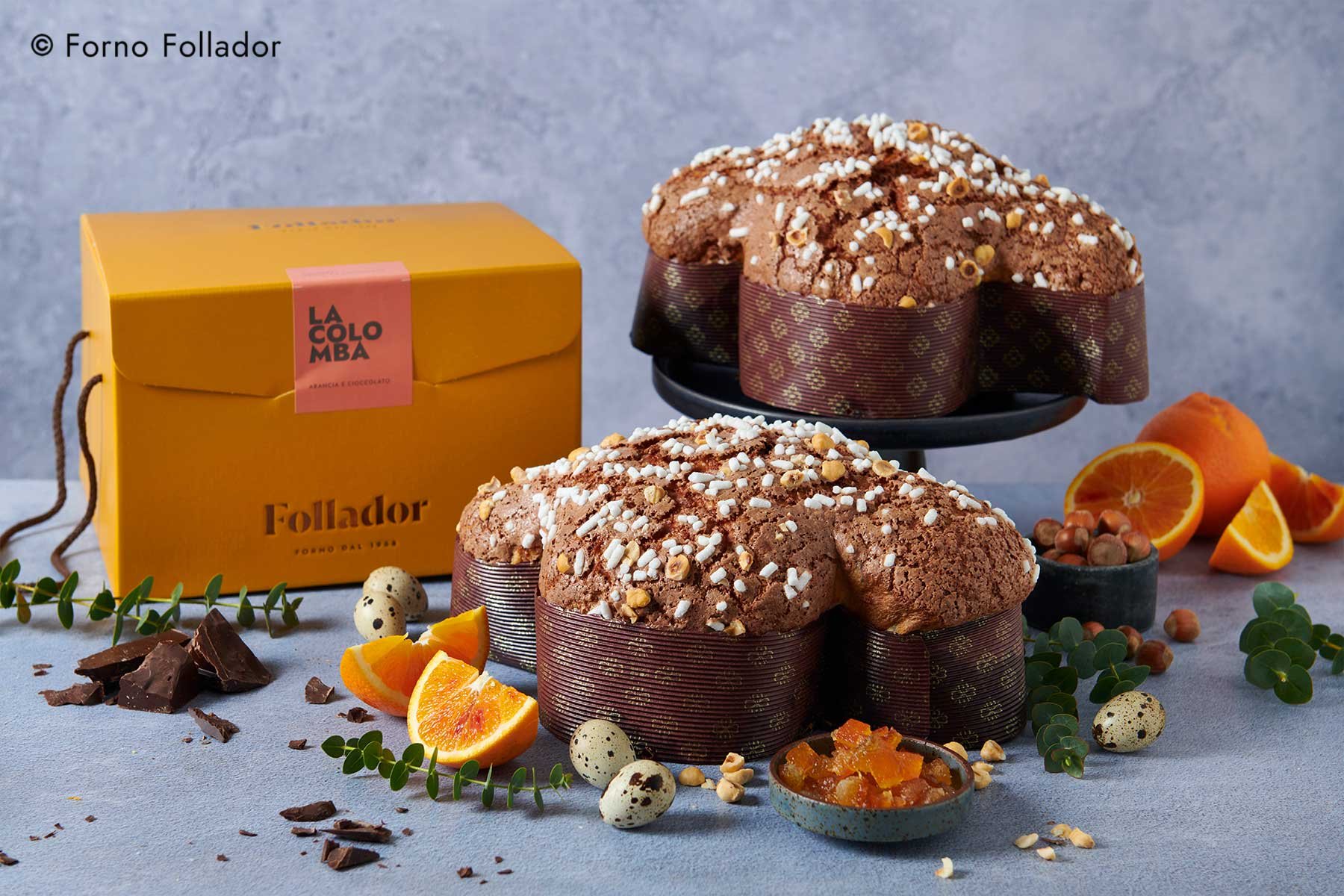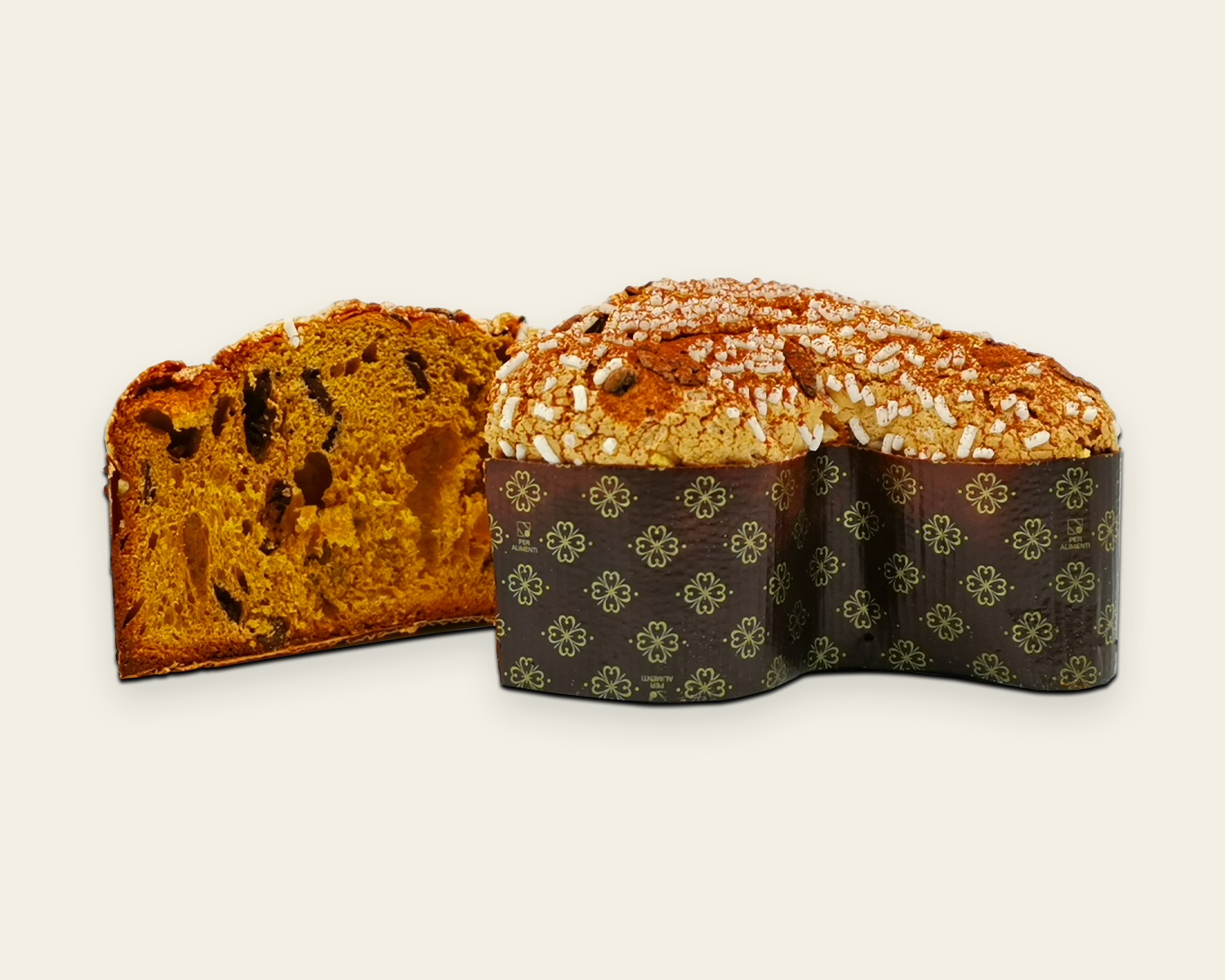Celebrate Easter the Italian Way with Chocolate
Major festivities, in Italy usually mean enormous meals with family and sometimes an ensuing quarrel. At Christmas, you are asked to take a stand between panettone and pandoro. At Easter, the main front is between colomba – the airy and fragrant leavened cake enriched with citrus scent and zest, and studded with almonds that is vaguely modeled as a dove to recall the white symbol of peace and resurrection – and chocolate eggs.
Over the last few years, though, it’s chocolate not the dove, that has come to bring peace to the tables. A central feature of the Carnival season and, of course, for Valentine’s Day, in the Mediterranean country, chocolate is usually set aside soon after Easter as the temperatures rise. Yet, this year’s early date fosters an abundance of cocoa-fueled ideas to celebrate the festivity. And, besides the usual joyful display of chocolate eggs, quite often, even the colomba switches (or matches) the usual spring-scented aromas for richer notes of chocolate.
Chocolate Colombe
Olivieri 1882 Triple-Chocolate Colomba
Olivieri 1882 a family-run company based not too far from Venice, today led by the proactive pastry chef Nicola Olivieri, makes a lavish Triple Chocolate Colomba, where white, milk and dark chocolate are blended to enrich the soft and airy dough made with natural mother dough and a 48-hour double fermentation. Covered with the traditional crunchy sugar glaze and whole almonds, it’s elegant, with a perfect balance between the sweet and bitter notes of the different chocolates alternating on the palate. (Orders in the US can be placed on the company website or on Goldbelly). It arrives in a chic black and white box that makes transporting it a breeze.
Grué Cioccolosa sfondo bianco
At the Rome-based and French-inspired Grué pastry shop, in their Colomba Cioccolosa, Marta Boccanera and Felice Venanzi are using an Ecuador 62% dark chocolate to give their masterfully leavened dough a bronzed hue and an intense and scrumptious taste reinforced by the addition of Ivory Coast 60% chocolate drops, almonds glaze, and cocoa nibs.
Follador Chocolate and Orange Colomba
While at Follador bakery (a company based in the North-Eastern region of Friuli Venezia Giulia), Antonio Follador bakes a Chocolate and Orange Colomba with 60% dark chocolate added to the dough together with vanilla and candied orange and dresses it with cocoa glaze, grains of sugar and hazelnuts.
Slitti Colomba Cioccolato
In Monsummano Terme, in the heart of the so-called Tuscan Chocolate Valley, the Maitre Chocolatier Andrea Slitti created for Easter 2024 the glorious Colomba Gran Ricetta Slitti, where chocolate co-stars along with the daily-refreshed 70-year-old sourdough. Here, the Gran Cacao 64% blend (Ecuador, Perù e Madagascar) and natural cocoa powder meet the heavenly scent of slowly candied oranges from Calabria, the rare Ciaculli tangerines from Sicily, and Bourbon vanilla pods.
Agli Amici Gianduja Colomba
Also, many Italian chefs and pizzaiolo love to bake their colomba for Easter, and chocolate is often part of their unique recipes. At the two Michelin stars restaurant Agli Amici, chef Emanuele Scarello and pastry chef Riccardo Celeghin reinterpret this Italian classic both in the traditional version and in the Cremino one, in a very limited edition, where they add dark chocolate, the lovely local roasted peanuts, Sicilian almonds, orange blossom scent and candied fruit by the renowned Italian pastry chef Mauro Morandin.
Star chef Antonino Cannavacciuolo – born in the Campania region and running his three Michelin stars restaurant Villa Crespi up in the North – tempts the greedy ones with his Gianduja Colomba, which he fills with milk gianduja chocolate and a luxurious glaze with chocolate chips and sugar grain. Read more about gianduja.
Colomba Caprese Diego Vitagliano
While in Naples, pizza chef Diego Vitagliano shuffles the cards on the table with his Colomba Caprese, reinterpreting the famous cake dedicated to Capri with a fluffy chocolate dough enriched with Morogoro 68% dark chocolate and almond praline glaze.
Chocolate Eggs
Cannavacciuolo Easter egg
When it comes to chocolate eggs, the classic many are familiar with is most closely associated with Perugina, the historic Italian brand founded in 1907 in Perugia and led to success by fashion designer Luisa Spagnoli (now part of Nestlé Italiana Spa). The brand is still delivering excellent classic eggs and the gorgeous Baci ones. With the eggs, Italian creativity reaches its peak, with an endless showcase of different shapes, colors, and tastes. This year, though, a relevant trend seems to head towards smaller dimensions to let people taste more options and varieties.
In addition to colombe, Cannavacciuolo also makes chocolate eggs, including the Cremino Egg, with a dark chocolate shell hiding a creamy and crunchy hazelnut and hazelnut grain layer. Other chocolate eggs on offer include flavors of nuts and coffee.
Amedei Ovetti
Amedei the multi-awarded Tuscan company that is particularly appreciated for its smooth and elegant bean-to-bar dark chocolate (both in blends and single origins, such as the exquisites Venezuelan Criollo from Chuao and Porcelana plantations), launches the Ovetti, mini (0,4 oz) chocolate filled eggs in three versions: a 66% dark chocolate shell filled with almond chocolate, a white chocolate shell with hazelnut chocolate and a milk chocolate shell with gianduja. They come in 9-egg and 20-egg packages, perfect for sharing with friends and family. For those who still want their own egg yet can’t decide on what to choose, Amedei also created a limited edition selection of three small (2,8 oz)n eggs, coming in the Dark Chocolate version (Blanco de Criollo, Porcelana, Nove) and in the Fruit version (Toscano Pistacchio, Toscano Nocciola, Toscano Frutti Rossi with dried berries), in both cases contain two 66% dark chocolate pralines with Piedmont Hazelnuts PGI as a “surprise.”
La Perla chocolate Easter eggs from Turin
La Perla, an acclaimed chocolate laboratory founded in 1992 by Sergio Arzilli in Turin – fuses the traditional Easter egg and one of their most appreciated classics – the Tartufi, creamy chocolate truffles with roasted Piedmont hazelnuts – in the new UOUO collection, in which two thin chocolate shells embrace a truffle filling, in four different flavors: Triple Chocolate (dark), Latte senza Latte (milk without milk, vegan), Limoncello e Meringa (lemon liqueur and meringue) and Pistacchio e Lampone (pistachio and raspberry), each containing an original Tartufo.
Pasticceria Dolcemascolo eggs
In Rome, the young pastry chef Matteo Dolcemascolo handcrafts and paints the beautiful marbled chocolate eggs (in three versions: Ivory Coast 70% dark chocolate, milk, and white, also mixed) packed in a cute paper box similar to those used to sell fresh eggs.
MUSCO Anna Magnani in Roma di Federico Fellini
Artful Chocolate Confections
In a few cases, chocolate becomes pure art matching taste and art: in Rome, again, yearly, former gallery owner and pastry chef Walter Musco creates a new collection of “art eggs” inspired by precise themes, movements, and cultural references. This year, his craft pays homage to the Eternal City with the Roma Città Aperta(?) collection (a direct reference to Roberto Rossellini’s masterpiece from 1945) to celebrate the two-sided soul of the welcoming, intense, and often harsh life in the Capital through its iconic places and celebrities, from the mysterious Bocca della Verità (the Mouth of Truth, a Roman marble mask said to detect lies) to the portrait of actress Anna Magnani. A part of the proceeds will be donated to Save the Children to support the dramatic crisis the world is facing.
Walcor Ouvo
Walcor, the Italian chocolate brand created in 1954 by former soccer player Walter Corsanini (now controlled by JP Morgan) celebrated its 70th anniversary by collaborating with the (un)fair art fair held in Milan and with the Looking for Art gallery to select the painting chosen for this year’s wrapping for chocolate eggs.: the winner—an oil painting by Sofia Fresia—vividly represents surprise, joy, and fun with cocoa beans and flowers on a light blue base.
Fatamorganai Uovo Torta Cioccolato Pasqua
Back to Rome, in Maria Agnese Spagnuolo’s hand – she is the founder and creator of the top quality, natural gelato independent chain Fatamorgana – the Easter egg even became a cake filled with ice cream, both in the dark chocolate version with Bronte pistachio praline and ice cream and strawberry sorbet and in the Gianduja chocolate version with Piemonte hazelnuts praline, hazelnut and gianduja ice cream and Madagascar chocolate.
MonSciu salame di cioccolata
And, if you are wondering what to do with any possible leftovers and uneaten chocolate eggs, the Italian popular wisdom perfectly embracing the modern zero-waste approach is the salame di cioccolata: a widespread homely recipe, it usually blends any (preferably dark) chocolate, crumbled biscuits and sugar (sometimes with eggs or butter) and take the shape of a salame, to be cut into thick slices and eaten as a sweet snack. Relatively easy to prepare, a few pastry shops sell it, such as the charmingly realistic version Mon Sciu, the tiny French-inspired pastry and chocolate shop created by the globe-trotter patissière and chocolatière Chiara Cianciaruso.














